The history of the American Civil War can be explored through nine National Military Parks, eleven National Battlefield Parks, and One National Battlefield Site. There are also several National Historical Parks and thousands of National Monuments, all under the protection of the National Parks Service.
The National Parks Service, or NPS, has preserved the sites of battlefields, monuments, and structures from the Civil War, fought from 1861 to 1865.
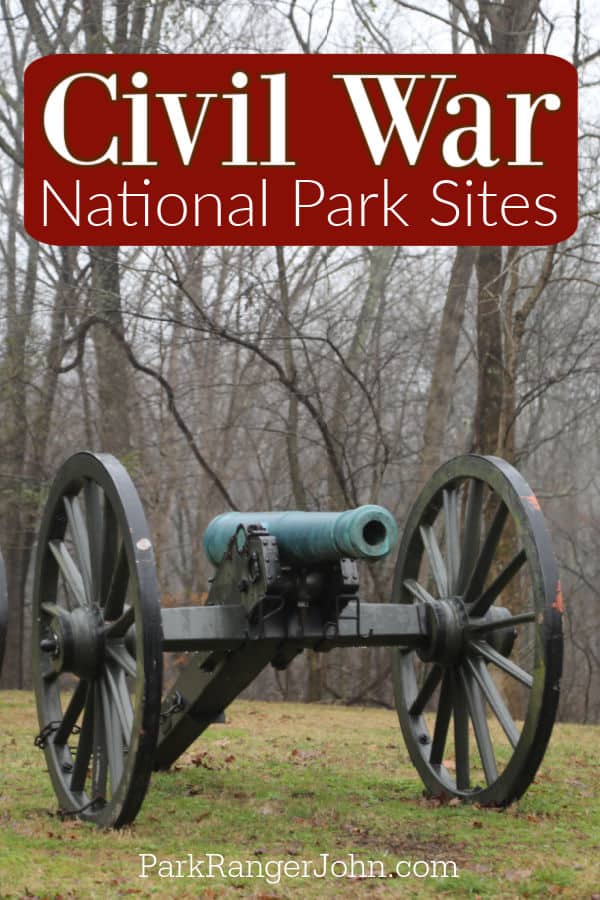
Civil War National Parks
Battlefield Preservation
There were over 10,500 military engagements during the American Civil War that were fought across 19 states. 50 of these are considered to be major battles that changed the outcome of the war. 100 of these are considered significant.
The war was fought across the country, spanning thousands of miles. The major battles and incidents all generally took place within three theaters or geographical zones. These were the Eastern Theater, the Western Theater, and the Trans-Mississippi Theater.
Over time some of these battlefields have been lost. There are 384 battlefields from this time that have survived. Of that number, only 162 have protection. Public and private organizations protect them.
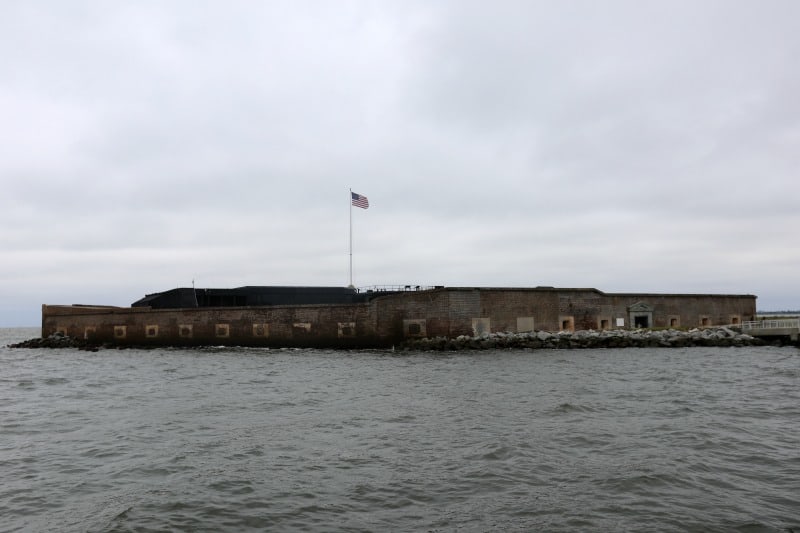
The American Civil War (1861 - 1865)
In the 19th Century, America was experiencing a time of tremendous economic growth. The North had invested in industry and moved away from an agricultural-based economy.
The South remained heavily reliant on large-scale farming. The Large scale farming undertaken by the South relied on the free labor of slaves.
The Causes of the Civil War
Tensions had been simmering between the northern and southern states for decades before the first shot of the Civil War was fired at Fort Sumter.
Tensions over state's rights concerning slavery came to the forefront with the passing of the Kansas-Nebraska act in 1856.
Congress passed the Kansas-Nebraska act to tackle the issue of slavery in the new territories of the United States. It was left up to settlers in these territories to decide whether or not they would allow slavery.
Both sides rejected the act, and violent clashes erupted between pro and anti-slavery groups. This turbulent period between 1855 and 1859 is known as 'Bleeding Kansas'.
The Rise of the Abolitionists
The Abolitionist movement that began in 1830, was an organized effort to end the practice of slavery in the United States of America.
The Abolitionists wanted the immediate release of all enslaved people in America.
1859 - John Brown's Raid of Harpers Ferry
One particular incident that has been memorialized is John Brown's Raid in 1859. John Brown, a staunch abolitionist, attacked the town of Harpers Ferry, Virginia.
He aimed to steal the Federal Armory housed there to arm a band of former slaves in the mountains of West Virginia.
The raid was a failure, with Brown and his men being captured by General Robert E. Lee. Incredibly you can visit the raid's location as it survives at Harpers Ferry National Historical Park.
The raid was a spark that ignited a flame. Relations broke down considerably between the North and South.
The breaking point would come in 1860 when Abraham Lincoln was elected as President of the United States of America. Civility between the North and the South ended with Lincoln's election.
The Confederacy is Born
Abraham Lincoln's election was the final straw for the South. The South saw Lincoln's election as a direct attack on their economy and way of life.
The southern states officially began to break away from the Union of the United States of America.
South Carolina was the first to secede on December 20th, 1860. Mississippi was next on January 9th, 1861. Within days Florida, Alabama, Georgia, Louisiana, and Texas had followed. On February 8th, the Confederate States of America was born.
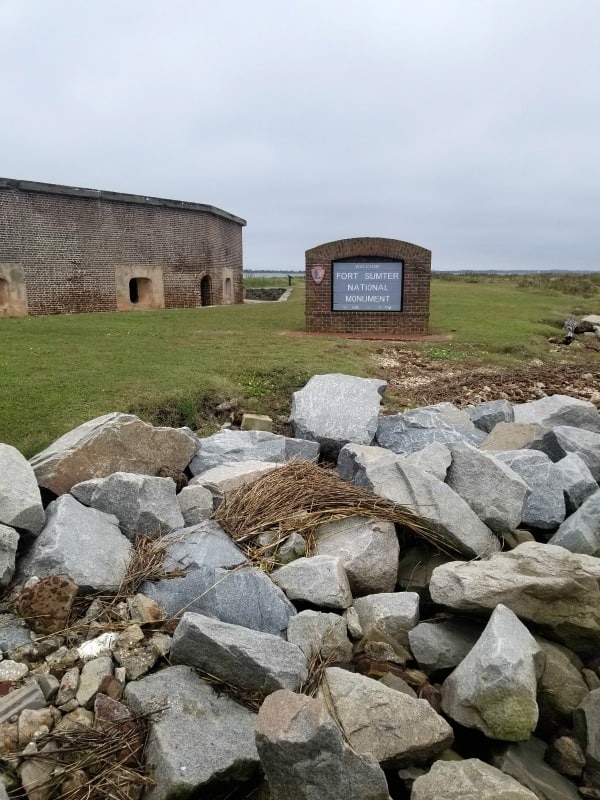
The Civil War Begins
With the majority of the Southern States now claiming independence from the Union by March of 1861, when Lincoln officially took office, it did not take long for the war to break out.
April - Fort Sumter
When Lincoln took office, the newly formed Confederate Army threatened the last Union-held fort in South Carolina, Fort Sumter in Charleston.
Today the site is a national monument, but in 1861, it was where the first shots of the Civil War were fired.
The Confederate forces under General P.G.T Beauregard laid siege to the fort when Union General Robert Anderson occupied it.
The Civil War officially began on April 12th, 1861, after Lincoln announced his intention to resupply the besieged fort. Beauregard bombarded the fort with artillery fire and forced the Union to surrender after two days.
1861 - The First Year of War
In the first year of the Civil War, battles raged across the country. The first major land battle of the war took place in Virginia, on July 21st, 1861, at Manassas.
President Lincoln sent in General Irvin McDowell to try to take the Confederate capital of Richmond.
Both the Union and the Confederates hoped for a swift conclusion to the war, but the First Battle of Bull Run, or The First Battle of Manassas as it is known in the South, showed this would not be the case.
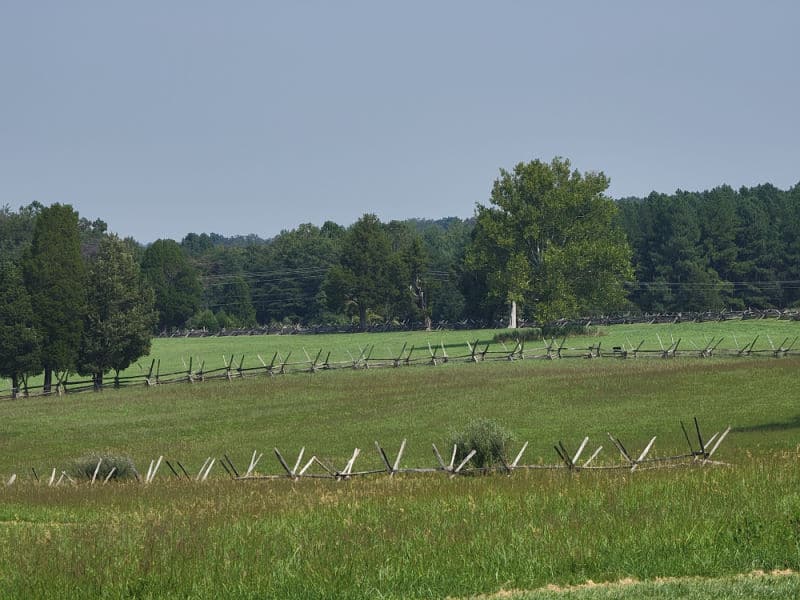
July 21st - The First Battle of Bull Run
On the 21st of July, 1861, Confederate Generals Thomas Jackson and P.G.T Beauregard led a force of 20,000 newly recruited Confederate Soldiers into battle at a site now under the care of the National Park Service.
35,000 Union soldiers marched from Washington D.C to attack the Confederates camped along the River Bull Run. Despite the Union having superior numbers, The First Battle of Bull Run was a Confederate victory.
By the afternoon, both sides had around 35,000 men on the field after receiving reinforcements.
At 4 pm the entire Confederate line charged the Union Army of Northeastern Virginia while sounding the Rebel Yell for the first time. The charge forced a panicked retreat to Washington by the Union.
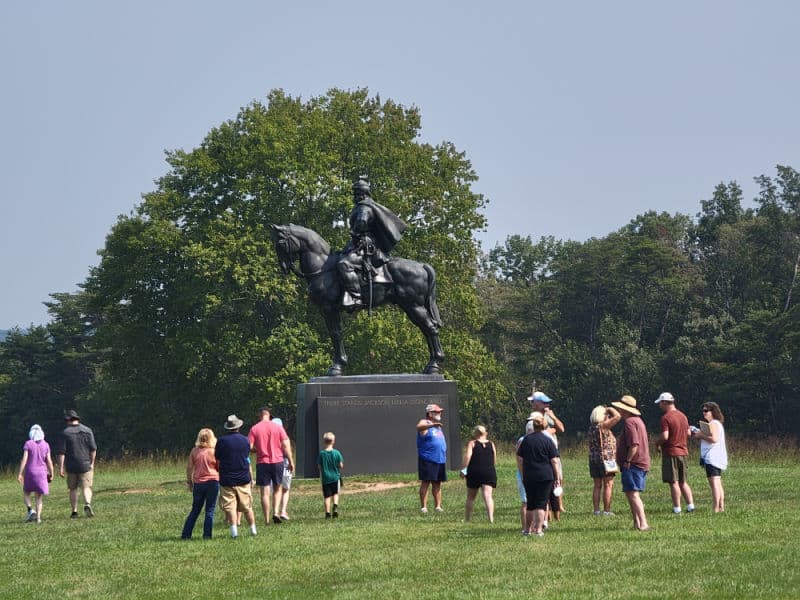
Manassas National Battlefield Park
This first battle has been commemorated at the Manassas National Battlefield Park.
As part of the park, you can visit the main battle sites, including Henry House Hill, where the Confederate line was held so steadily by General Thomas Jackson that he received the name 'Stonewall' Jackson.
The park also preserves the site where the Confederate forces made their camp during the winter of 1861 to 1862.
It would not be the last time the Union and Confederates would meet on the ground now preserved by the Manassas National Battlefield Park.
Washington Defenses
After the first battle of Bull Run, Lincoln commissioned a series of trenches, earthworks, and fortifications to be built surrounding Washington D.C. At the time, Fort Washington was the only defense the Union capital had.
What began in this first year of the war would total 68 forts by the end. Washington D.C became one of the most heavily fortified cities in the world.
Today the National Parks Service has nineteen of these forts under its care.
Trouble in the Trans-Mississippi Theater
While the war began in Virginia, it quickly spread throughout the country as the year went on. Trouble had been brewing in the border state of Missouri.
The first battle fought in the Trans-Mississippi Theater began on August 10th, 1861, bringing the war west of the Mississippi.
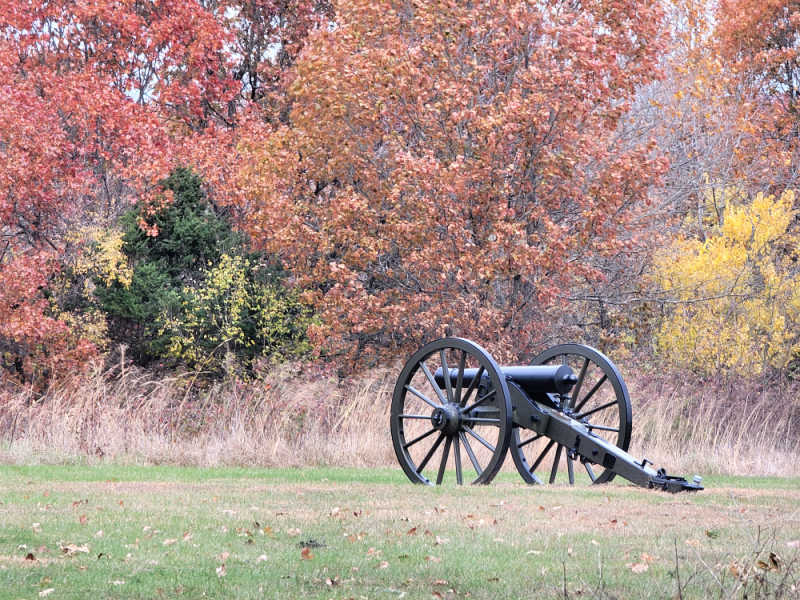
August 10th, Battle of Wilson's Creek
The battle of Wilson's Creek began with a surprise attack by Union General Nathaniel Lyon on the Confederate forces camped at Wilson's Creek.
Confederate General Ben McCulloch managed to rally his troops after the initial attack and turned the battle into a southern victory.
Union General Nathanial Lyon was killed during the battle, making him the first Union General to die in the conflict.
The National Parks Service has preserved the battlefield and commemorated Lyon's death with a marker on Bloody Hill in Wilson's Creek National Battlefield Park.
1862 - A Bloody and Violent Second Year
1862 was a turning point in the war. In Virginia, Confederate General Robert E. Lee took control of the Confederate forces and focused his efforts on defeating Union General McClellan and his Army of the Potomac.
As Union President Abraham Lincoln was seeking a suitable time to announce the Emancipation Proclamation, a string of Confederate victories delayed its announcement.
Union General McClellan launched his Peninsula Campaign, and General Robert E. Lee attempted his first invasion of the North in the latter half of the year.
The second year of the war was particularly bloody. The loss of life on both sides was astronomical. The Battle of Shiloh and the Battle of Antietam were particularly vicious.
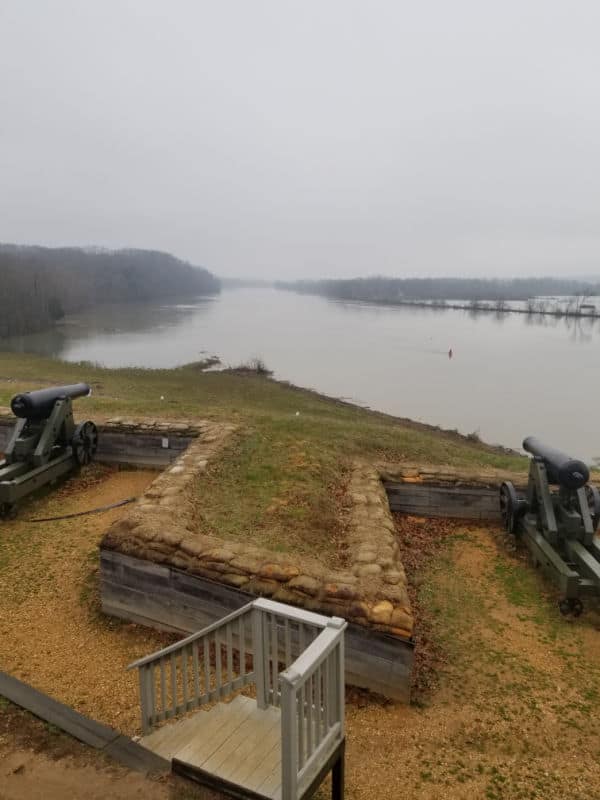
Early Battles
During this second year, Union General Ulysses S. Grant made a name for himself with his military tactics that led to the surrender of Fort Donelson by the Confederates on February 16th, 1862.
Grant's success at what is now the Fort Donelson National Battlefield Park opened the Cumberland River to the Union.
Three months into 1862, the Union had secured their hold over Missouri while opening up Arkansas to a Union advance.
This was due to a victory during the Battle of Pea Ridge from March 7th, to 8th. The Pea Ridge National Military Park is one of the most well-preserved battlefields from the Civil War.
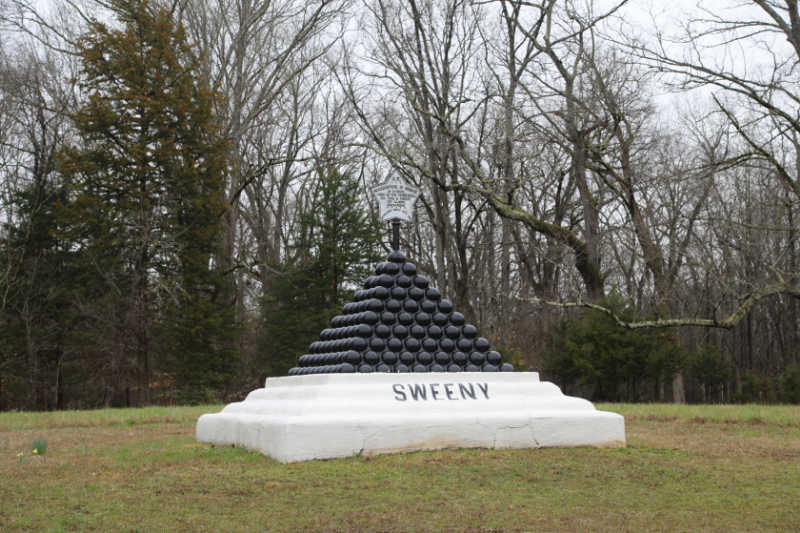
April 6th, Shiloh
On April 6th, 1862, one of the bloodiest battles of the Civil War was fought over the control of the transportation hub at Corinth, Mississippi.
The Battle of Shiloh saw General Albert Sidney Johnston pitted against Union General Ulysses S. Grant.
Johnston was killed on the first day of fighting.
The Confederates surprised the Union camped at Pittsburg Landing and were forced to retreat after two days of vicious fighting.
The Battle of Shiloh was a Union victory that came at an extremely high cost. Over 23,000 men were killed or wounded on the battlefield now preserved at the Shiloh National Battlefield Park.
May - The Peninsula Campaign
A month after the horrific Battle of Shiloh, Union General McClellan launched his Peninsula Campaign.
The campaign was an effort to take the Confederate capital of Richmond. After taking the historic Yorktown stronghold on May 4th, he made his way to the outskirts of Richmond.
Richmond
As the Confederate capital, Richmond saw a tremendous amount of military action.
The two battles that were the culmination of the Peninsula Campaign, The Battle of Seven Pines on May 31st, and the Seven Days Battles on June 25th, failed to take the capital from the Confederates.
The Richmond National Battlefield Park encompasses the sites of both the Battle of Seven Pines and the Seven Days Battle.
During the Battle of Seven Pines, General Robert E. Lee became the commander of the Army of Northern Virginia.
Lee aggressively beat back McClellan's attempts to take Richmond and secured the capital by the end of the Seven Days Battle.

August - Second Battle of Bull Run
A month after driving McClellan back from the outskirts of Richmond, the Second Battle of Bull Run took place from August 30th to the 31st.
The second battle site is preserved at the Manassas National Battlefield Park.
The battle was a Confederate victory that crushed northern morale just enough to make General Lee believe he could secure the Confederacy by invading the North.
September - Antietam: America's Bloodiest Day
September 1862, saw General Lee move his army across the Potomac and into Maryland. Lee's invasion did not go to plan, mainly because his plans fell into the hands of the Union.
Lee had split his army when he crossed the Potomac and quickly raced to regroup in the face of an impending Union attack. The Union caught up with Lee at Antietam Creek.
Over 130,000 men fought during the Battle of Antietam, 23,000 of which were killed or wounded during the battle.
This bloody history is preserved at the Antietam National Battlefield Park. Antietam was a Union victory that drove Lee back over the Potomac River.
December - The Battle of Fredericksburg
On December 11th, 1862, The town of Fredericksburg became the first urban battlefield of the Civil War.
The Battle of Fredericksburg is remembered as one of the bloodiest battles of the Civil War.
Union General Ambrose E. Burnside, who was briefly in command of the Army of the Potomac, attempted to advance to Richmond.
The fight raged in and around Fredericksburg for four days and ended in a Confederate victory on December 15th, 1862.
The Fredericksburg and Spotsylvania National Military Park protects the site and houses a cemetery where 15,000 soldiers are buried.

1863 - After The Emancipation Proclamation
Union President Abraham Lincoln had gotten the victory he needed at Antietam and released the Emancipation Proclamation just before the war entered its third year.
The proclamation freed all those who were enslaved in the rebellious Confederate States.
The proclamation came into effect on January 1st, 1863. January 1st also marked a pause in fighting at Stones River Tennessee, where a battle had begun on December 31st, 1862.
The Battle of Stones River was for the control of Middle Tennessee.
General Lee attempted a second invasion of the North after the Battle of Chancellorsville, fought from April 30th to May 6th.
Regarded as Lee's perfect battle, it was here that General 'Stonewall' Jackson was mortally wounded. The battlefield is part of the Fredericksburg and Spotsylvania National Military Park.
The beginning of May saw the Siege of Vicksburg, Mississippi, by Union General Ulysses S. Grant. The Confederates and the Union viewed Vicksburg as the key to winning the Civil War.
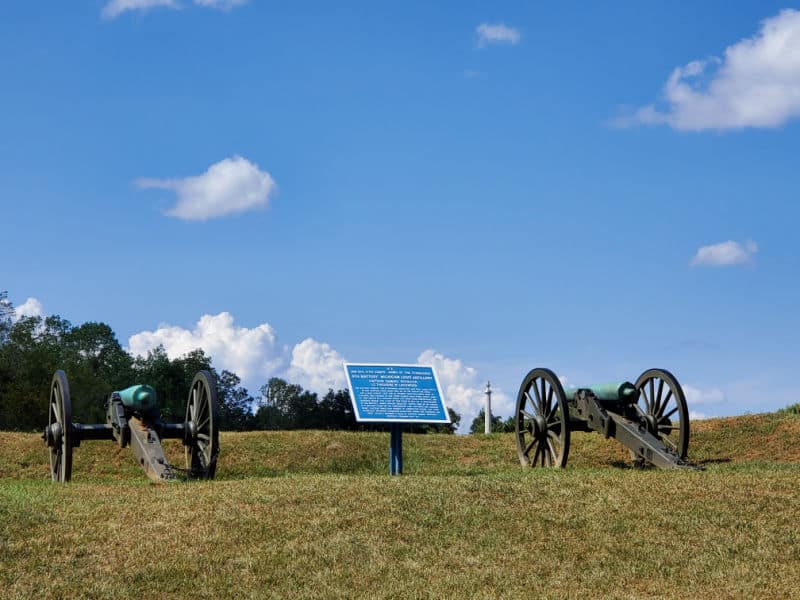
May - Vicksburg
The heavily fortified vital city of Vicksburg came under Union attack on May 18th, 1863. When Grant's attack failed, he laid siege to Vicksburg for 47-days.
The Confederate surrender here gave control of the Mississippi to the Union.
The Surrender of Vicksburg came just one day after another battle ended in Pennsylvania. This battle was the legendary battle of Gettysburg.
July - Gettysburg
The Battle of Gettysburg was a turning point of the Civil War and is one of the bloodiest battles in American history, with over 50,000 casualties.
Gettysburg marked the end of General Lee's second invasion of the North.
The Gettysburg National Military Park remembers all those who lost their lives during the three-day battle that began on July 1st and ended on July 3rd.
The park protects the areas such as Little Round Top and Culpus Hill, where the fighting became legendary.
The Gettysburg National Military Park was also where Union President Abraham Lincoln made his famous speech, the Gettysburg Address.
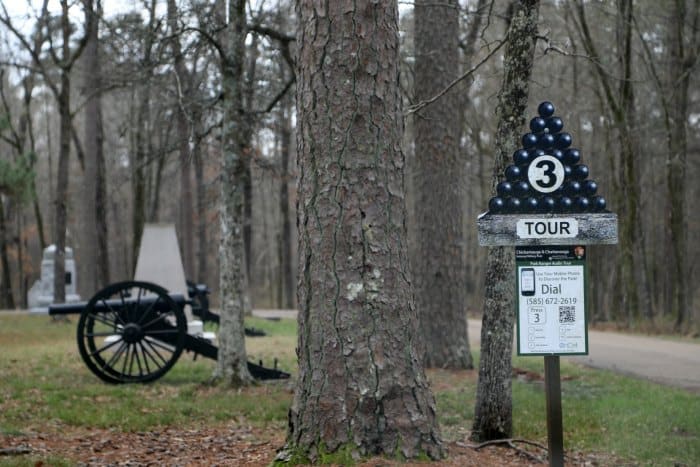
September - The Chickamauga Campaign
In September, the focus turned to Georgia with the Chickamauga Campaign.
The campaign aimed to take the important city of Chattanooga, situated on the Tennessee River. Chattanooga was a transportation hub considered the gateway to the Deep South.
A Union victory at Chattanooga would ensure they had a supply base to venture further into the Deep South.
Two Battles
The Union Army of the Cumberland and the Confederate Army of Tennessee engaged in a series of battles known as the Chickamauga Campaign.
From August 21st to September 20th, Chattanooga was a focal point.
The Union successfully took Chattanooga from the Confederates but lost it after the bloody battle of Chickamauga on September 19th.
The battle was the first major battle to be fought in Georgia and was the second bloodiest battle after Gettysburg.
The Confederates laid siege to Chattanooga, which ended in the Battle of Chattanooga after Union General Grant arrived to sort out the situation.
Chattanooga was officially under Union control by November 25th, 1863. The site of this monumental Union win is protected at the Chickamauga-Chattanooga National Military Park.
This victory allowed the Union to advance into the Deep South in 1864.
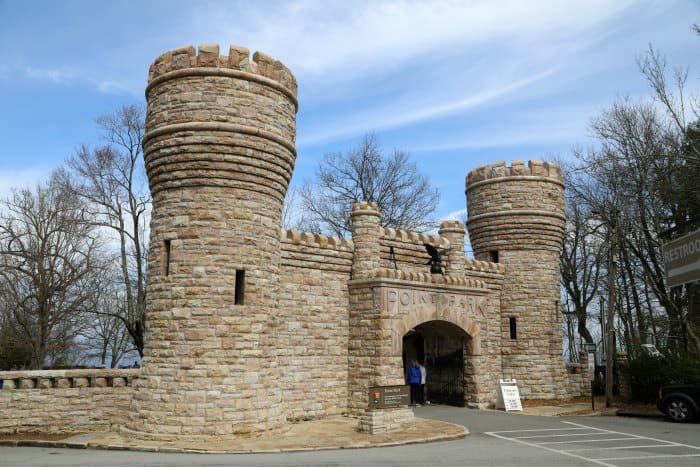
1864 - The Beginning of the End
1864 was when Ulysses S. Grant was given control of the Union Armies. Grant devised a plan to defeat General Lee and the Confederates once and for all.
This plan is known as the Overland Campaign.
Grant planned to win the war by destroying the Confederate armies and shifting the focus from gaining and holding territories.
Instead, the tactic was to make it incredibly difficult for the Confederates to wage war. The goal was to destroy Lee's army and then capture Richmond.
While Grant pursued Lee in Virginia, General Sherman was making his way to the coast in his Atlanta Campaign.
This was made possible by the Union victory at Chattanooga. Sherman was to destroy the Confederate Army of Tennessee under Joseph E. Johnston.
During this time Andersonville Prison was being built which is now part of Andersonville National Historic Site.
The Overland Campaign
Grant crossed the Rapidan River on May 4th, intending to maneuver Lee's army into battle. Lee surprised Grant when he attacked Grant's forces in what would become the Battle of the Wilderness.
The battlefield of this inconclusive battle is in The Fredericksburg and Spotsylvania National Military Park.
Grant pulled his forces back from the Battle of the Wilderness and moved his army towards Spotsylvania Courthouse.
Lee had made it there first and dug in, creating defensive earthworks. Grant's arrival began the Battle of Spotsylvania. Grant failed to break through the Confederate defenses and pulled his force back again.
Successful Union Campaigns of 1864
By June 1864, Grant had maneuvered Lee's army so that the Confederates had been forced to abandon much of Northern Virginia.
The Confederates entrenched themselves at a strategic crossroads used as a supply route to Richmond.
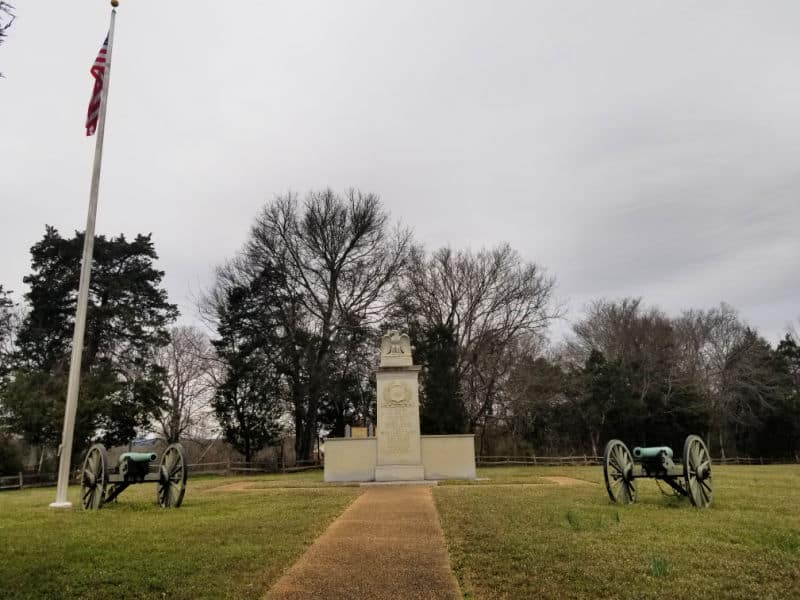
Trans-Mississippi - Cold Harbor
The Battle of Cold Harbor, now part of the Richmond National Battlefield Park, began when Grant repeatedly attacked the entrenched Confederates from May 31st to June 12th.
While the Battle of Cold Harbor was happening, the Battle of Brices Cross Roads was being fought in Mississippi.
The Battle of Brice's Cross Roads began when Confederate forces under Gen. Forrest attempted to sabotage the Union supply line to stop Sherman's march to Atlanta.
Meanwhile in Virginia
Back in Virginia, The Union suffered heavy losses during the battle of Cold Harbor which, like Brice's Crossroads, was a Confederate Victory.
Cold Harbor would be Lee's last major victory of the Civil War. The Siege of Petersburg began three days later on June 15th, signaling the beginning of the end of the Civil War and the Confederacy.
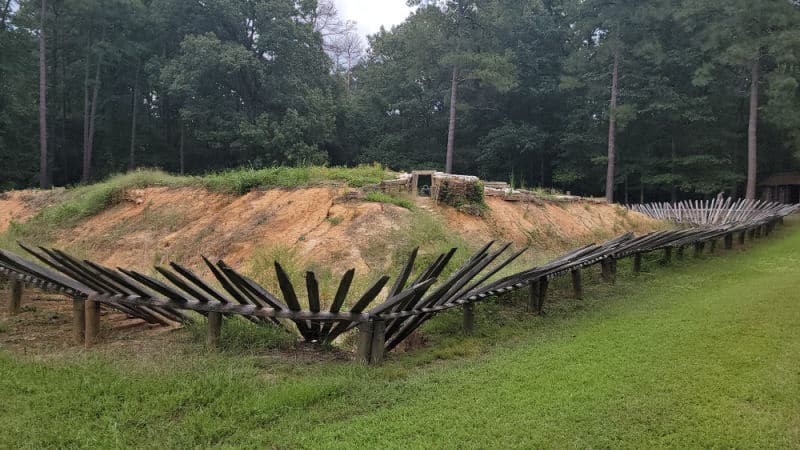
The Siege of Petersburg
Grant's Overland Campaign culminated in the longest siege of the American Civil War, at Petersburg Virginia.
For nine months, General Robert E. Lee and General Grant engaged in trench warfare.
Grant laid siege to Petersburg by digging a series of siege trenches around Petersburg that stretched to the capital at Richmond.
Grant wore down Lee's army with a series of coordinated attacks along the line at Petersburg and Richmond.
The Battle of the Crater on July 30th was Grant's attempt to end the siege by full-out assault. This battle was horrific in the true sense of the word.
The land still bears the scar today, with the crater visible at the Petersburg National Battlefield Park. The attack failed to end the siege, which continued until April 1865.
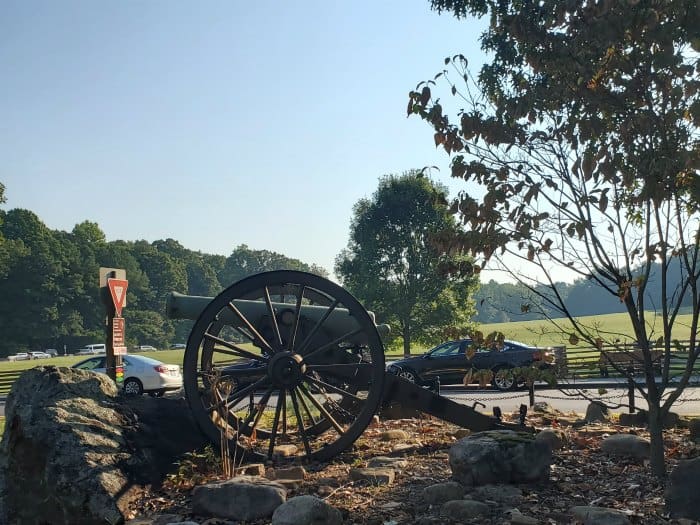
Progress in Atlanta
While Grant had Lee under siege in Petersburg, Sherman made headway in the Atlanta Campaign.
Johnston and Sherman had been fighting their way to Atlanta when Johnston dug in at Kennesaw Mountain.
The site, now known as Kennesaw Mountain National Battlefield Park, was where the Battle of Kennesaw Mountain took place from June 27th to July 2nd.
Sherman attacked Johnston's position head-on and forced Johnston to retreat, pushing them closer to Atlanta.
Summer of 1864
By the summer of 1864, the Union and Confederates were still fighting battles on all fronts. Petersburg was still under siege from Union General Grant.
In Mississippi, the Union worked to secure supply lines at the Battle of Tupelo in July, while Confederates in the Shenandoah Valley had received orders to clear the Valley and invade Maryland.
Robert E. Lee was desperate to break the siege of Petersburg. On July 9th, he attempted to draw the Union's attention away from the siege at Petersburg by ordering an invasion of Maryland by Jubal Early.
Early entered Maryland in early July and fought the Union at Monocacy Junction along the Monocacy River.
The battle preserved at Monocacy National Battlefield Park was a Confederate victory but a distraction that allowed the Union capital to be reinforced.
The Shenandoah Valley
The Shenandoah Valley, like Virginia, was a focal point throughout the four years of the Civil War.
The fertile valley provided natural resources to the Confederates and was a route to and from Washington D.C.
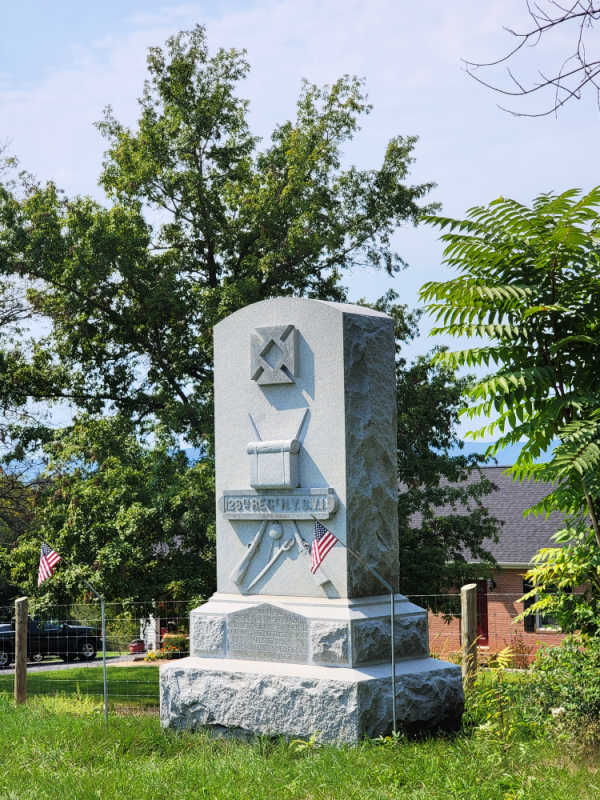
Protected Sites from The Valley Campaigns
The Shenandoah Valley is home to several Civil War sites protected by the National Parks Service.
The National Park Service has protected over 200,000 acres of the Shenandoah Valley with the Shenandoah National Park.
The Shenandoah Valley is also home to the Cedar Creek and Belle Grove National Historical Park where the Battle of Cedar Creek took place during the later Valley Campaigns.
The site is preserved and protected by the NPS.
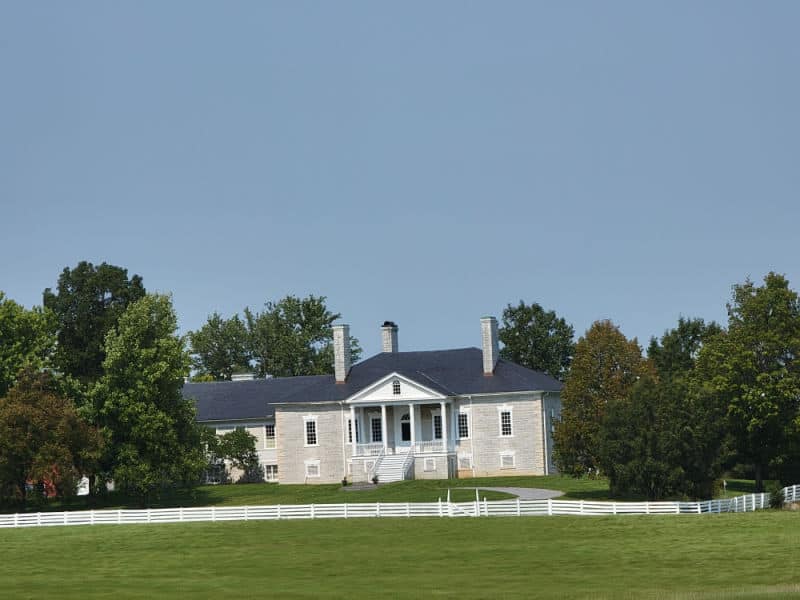
October - Cedar Creek & Belle Grove National Historic Site
The Battle of Cedar Creek was a decisive battle fought on October 19th, 1864. Cedar Creek was a Union victory that changed the course of the Civil War.
It was the last major battle to be fought in the Shenandoah Valley, which by 1864 was not the fertile valley it once was.
The Cedar Creek and Belle Grove National Historic site preserves the Belle Grove Plantation, the grounds of which were used as a Union camp.
The plantation house itself was used as Union Headquarters by General Sheridan.
The Confederates surprised the unsuspecting Union soldiers just before dawn in foggy conditions.
Despite this surprise attack, the Confederates lost, not just the battle but control of the Shenandoah Valley.
1865 - The End of the War
By 1865, the Union was successfully crushing the Confederacy.
General Sherman's march to the sea had successfully landed him in Savannah. Next, he turned his attention to the Carolinas.
Tennessee was now under Union control. The Confederate capital was still under siege, and Lee was now desperate to end it.
The Fall of Richmond
By March 1865, the conditions in the besieged Confederate capital and Petersburg were dismal.
Lee was desperate to end the suffering and planned one last offensive in an attempt to break through Grant's immovable line.
Lee attacked Fort Steadman on March 25th and failed.
At The Battle of Five Forks on April 1st, the Confederate forces lost control of the vital crossroads, and on April 2nd, Grant ordered a full assault on Petersburg to end the siege.
By the evening of April 2nd, Lee knew he could no longer hold Petersburg and abandoned both cities.
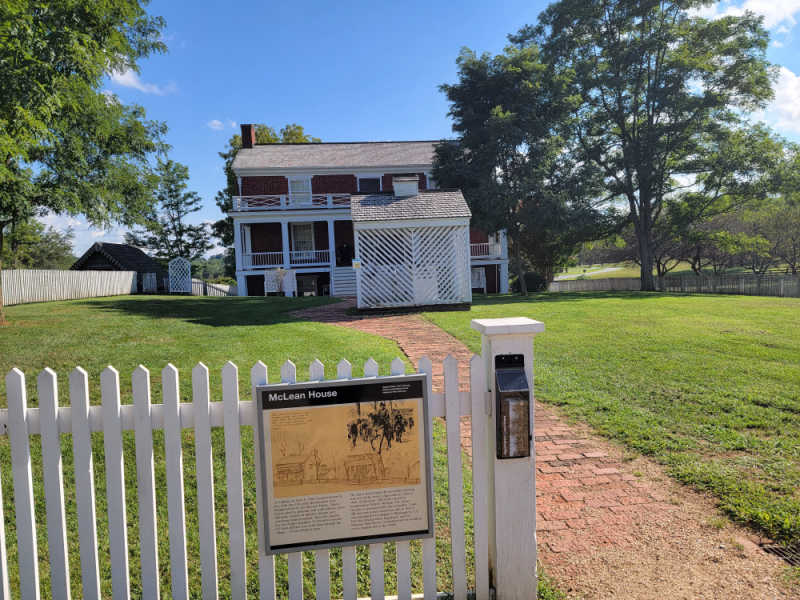
April - Appomattox Court House
After abandoning Petersburg and Richmond, Lee was ready to regroup, resupply his army, and continue the fight.
Lee's pursuit of rations for his army led to the Battle of Sailor's Creek on April 6th, where Lee lost one-third of his army.
To get away from the Union after Sailor's Creek, Lee found himself backed into a corner at Appomattox Court House, now a National Historical Park in Virginia.
After exhausting every option, Lee surrendered what was left of his Army of Northern Virginia to General Ulysses S. Grant at the McLean House on April 9th, 1865.
Lee's surrender ended the fighting in Virginia and signaled an end to the Civil War.
The American Civil War officially ended on June 2nd, 1865, when the terms of surrender negotiations for the Army of the Trans-Mississippi were concluded.

Additional Civil War National Parks
Pecos National Historical Park
Reconstruction Era National Historical Park
Fort Smith National Historic Site
Fort Scott National Historic Site
Additional Civil War Resources
The Untold Civil War: Exploring the Human Side of War
The Civil War - A film by Ken Burns
1861 - The Civil War Awakening
The Civil War a Travelers Guide - National Geographic
Learn more about National Park Passes for parks that have an entrance fee.
$80.00 - For the America the Beautiful/National Park Pass. The pass covers entrance fees to all US National Park Sites and over 2,000 Federal Recreation Fee Sites for an entire year and covers everyone in the car for per-vehicle sites and up to 4 adults for per-person sites.

Buy your pass at this link, and REI will donate 10% of pass proceeds to the National Forest Foundation, National Park Foundation, and the U.S. Endowment for Forestry & Communities.
National Park Free Entrance Days -Mark your calendars with the five free entrance days the National Park Service offers annually.

For a fun adventure check out Escape Campervans. These campervans have built in beds, kitchen area with refrigerators, and more. You can have them fully set up with kitchen supplies, bedding, and other fun extras. They are painted with epic designs you can't miss!
Escape Campervans has offices in Vancouver, Seattle, Portland, San Francisco, Las Vegas, Los Angeles, Phoenix, Salt Lake City, Denver, New York, and Orlando
Make sure to follow Park Ranger John on Facebook, Instagram, Pinterest, and TikTok





Leave a Reply